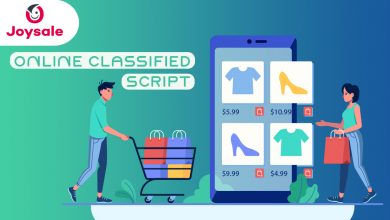Top 10 Programming Languages for Mobile App Development [Detailed Guide]

Mobile technology has dominated the digital era. Many people use their mobile devices to browse, interact with family and friends, conduct business, and perform a variety of other things.
Since people spend so much time using mobile applications an programming languages, they are immensely popular. While numerous programming languages are accessible, not all of them are appropriate for app development. As a result, the developers need to understand their alternatives and choose the best programming language not only to build apps for Android and iOS but also to become versatile mobile app developers.
Mobile apps are available in a variety of sizes and formats. Before we go any further, let’s quickly go through the various forms of app development from a code standpoint.
- Native Apps
- PWAs
- Hybrid Apps
When it comes to designing mobile apps, there are hundreds of programming languages to choose from. You’d investigate a list of 30 coding languages for days before deciding which one to use for your project. But for a mobile application development company to suggest the best app development language and start working on it, it is better if you go through these top programming languages!
Top 10 Programming Languages
#1 iOS Programming Languages
- Objective-C
Objective-C, Apple’s programming language, was the first to enable mobile app development on its platform. It’s an object-oriented programming language that combines C syntax with object-oriented features. The language is not particularly user-friendly for mobile app developers. Since the syntax is unusual, troubleshooting the square brackets is more difficult.
- Swift
Swift is an Apple programming language that was released in 2014. The next year, it was made accessible for development in Xcode. This language has quickly become the preferred language for iOS mobile app developers. Since the introduction of Swift, the utilization of Objective-C has declined. Swift is strongly advised for all contemporary Apple applications. It is a simple programming language and more compact than Objective-C and other languages. Swift should be an easy transition for any Apple developer who is already familiar with Objective-C.
#2 Android
- Java
Many mobile app developers utilize JAVA, one of the most popular programming languages. It is even the most-searched-for programming language on several search engines. Java, the primary programming language of Android, may be utilized in two ways. It may run in either a virtual machine or a browser window.
- Kotlin
In 2017, Google announced that the Kotlin programming language will be supported. It is an Android programming language that runs on the Java Virtual Machine and may be used instead of normal Java. Even though it is still a fresh language, it has a sizable following. Since Kotlin and Java are both data-compatible, data may be transferred between them. Kotlin allows you to access all of your Java libraries. The Kotlin language is similar to Java Bytecode in terms of execution. It’s frequently seen as a more well-organized and tidy variant of Java.
- C/C++
C programming languages are well-known for their high performance, which is critical when working on a demanding project like a mobile 3D game. Keep in mind, however, that developers will still need to use Java. The mobile app developers will not be able to create a full-fledged mobile app without it. The Android NDK enables the creation of an application component, such as a library, in C / C ++, which can then be connected to a Java program.
#3 Hybrid Programming Languages
- React Native
React Native uses JavaScript to interface with pre-built functionality native to their framework. This allows you to modify the user interface, collect and retrieve data, and show it to the user. To put it another way, you mostly rely on JavaScript to modify native components.
- Flutter
Of all, even a juggernaut like Google couldn’t sidestep the challenges of developing cross-platform Android and iOS apps. Despite being in beta, Flutter takes a different strategy than React Native and Xamarin.
- Appcelerator
Appcelerator, like React Native, connects to native framework APIs via JS. Also, Appcelerator Titanium enables the creation of native iOS, Android, and Windows apps.
- Xamarin
Later, Microsoft acquired the Xamarin framework, which enables mobile app developers to create code in C# and compare it to other frameworks. In the classic sense, Xamarin is not a language. It’s a free and open iOS, Android, and Windows development platform. It runs on the.NET platform and uses C# as its primary programming language.
- Cordova/PhoneGap
The Apache Cordova programming language underpins both the Cordova/PhoneGap and Ionic frameworks. This programming language is used to construct hybrid mobile apps that transform web experiences into native ones.
#4 Progressive Web Apps Programming Languages
- Python
Python is a well-known programming language that may be used for a variety of tasks. It was used by mobile app developers to create cross-platform apps for the web, desktop, and mobile. It can also create an Android or desktop app from the ground up. It’s a simple, intelligible language with only a smidgeon of intricacy.
- Ruby
Ruby is a powerful programming language that can be used for a variety of purposes, including PWAs. Because of its simplicity, Ruby is popular among web developers. While it is straightforward to publish Ruby code, it is not always simple to detect and correct bugs.
- PHP
Although backend applications are built in PHP, the front end still requires HTML, CSS, and JS. A PHP-powered website will not have the same appearance, feel, or functionality as a standard PWA. To put it another way, PHP will not be enough to build a progressive web application. However, PHP may still be used for a large percentage of your project.
Aspects to Consider When Choosing a Programming Language
Targeted Platform
It is vital to consider the platform on which the application will run.
Elasticity of a Language
This relates to how easy it is to add new features to current software. It may be required to construct a new collection of functions or alter an existing library to provide new features. Here are some questions to consider:
- Is it feasible to take advantage of a language feature without creating a new library?
- Is the capability accessible in the language library if it isn’t?
- Why reinvent the wheel if the capability isn’t native or available as a library?
Time to Production
This is the amount of time required for the application to go live, or when the code is ready for production and functions properly. It varies greatly depending on the size of the code. In general, the simpler the code, and therefore the shorter the time required to connect to the internet, the easier it is to grasp.
Performance
A software and a platform can only provide so much performance, and the programming language used to create the application affects performance. When scalability in the target environment is limited, language performance should be considered.
Winding Up
As can be seen, each programming language has advantages and disadvantages. A mobile app developer cannot confidently consider oneself superior to the other. Everything is dependent on the sort of application, the budget, the deadline, and the developer’s technical skills.
Consider the different types of mobile applications on the market, the idiosyncrasies of the selected languages, frameworks and tools accessible, and so much more before picking the best app coding language for your mobile product or developing the finest code for apps. Something fresh to try is constantly available!





